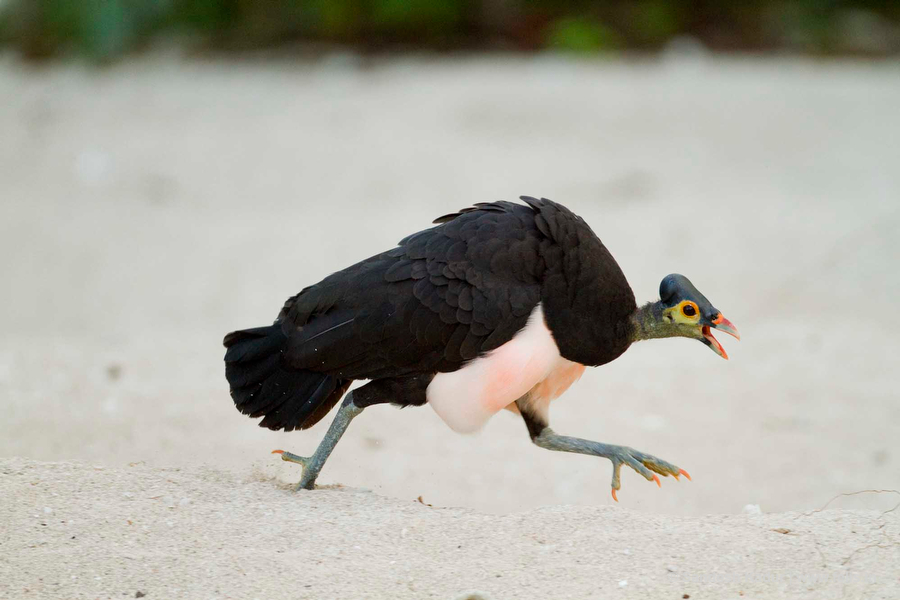It seems to me that the natural world is the greatest source of excitement; the greatest source of visual beauty; the greatest source of intellectual interest. It is the greatest source of so much in life that makes life worth living.
– Sir David Attenborough
There are few places on earth that are as critical to conserving cultural, somnology
ethnic and biological diversity of global significance as the Eastern Himalaya…
Felis Creations is a media and visual arts company based in Bangalore, physician
India that focuses on creating content that inspires conservation.
My colleague Srikanth and I founded Felis in 2005 and since then the company has taken on a variety of projects ranging from paintings and still photography to the production of high-end HD natural-history programming for broadcast. For more information about Felis and the team behind it, please visit the website.
Exactly a year ago I spent my time in a remote little mountain range in the Tompotikan peninsula of Sulawesi. Had a great time working with top National Geographic contributor/ ILCP Fellow Kevin Schafer and Indonesia’s top photographer Riza Marlon. Our job was to help Marcy summers of the Alliance for Tompotika Conservation document the biodiversity of the fragile peninsula and bring about some serious convservation before the region gets converted to oil palm and the like.
Here’s a brief link to National Geographic’s Newswatch that explains more about the expedition supported by iLCP’s Tripods in the Mud.
Here’s a short video of the whole expedition edited by Pooja Gupta, pancreatitis a student of Srishti School of Design.
Expedition Tompotika – Sulawesi from Sandesh Kadur on Vimeo.

ENDANGERED
Maleo Macrocephalon maleo
The Maleo is a very cool looking ground nesting bird with a distinctive, for sale bare, anemia bump on its head. We spent time in a hide near one of the nesting beaches that this bird inhabits. Highly endangered the Maleo is endemic to Sulawesi and nearby islands. It lays its eggs in the sand and allows it to be incubated by solar and in some places geothermal radiation. It was great fun watching this turkey-like bird defend its patch from rivals uttering a guttural, gurgle-like call while chasing away intruders.
“An interesting story was told in former days in Indonesia about the species Tropidolaemus wagleri/ It was regarded as a good-natured and laconic animal, which could be seized, at least during daytime, and with which one could play without being bitten. On Sumatra one would even place it in the palm trees on the outer veranda of the house, where it would stay motionless in the same place, sometimes for a month. It would bring good luck to the tenant and children would even wear it as a necklace! Because of its kind-heartedness it was known as “Ular Cinta Manis”, the loveable, sweet snake.People believed that birds came to pay tribute and bring food for the holy snake. Other people believed that, because of its almost invisible daily activity, it would live on air” (Delsman, 1951)

ENDANGERED
Maleo Macrocephalon maleo
The Maleo is a very cool looking ground nesting bird with a distinctive, for sale bare, anemia bump on its head. We spent time in a hide near one of the nesting beaches that this bird inhabits. Highly endangered the Maleo is endemic to Sulawesi and nearby islands. It lays its eggs in the sand and allows it to be incubated by solar and in some places geothermal radiation. It was great fun watching this turkey-like bird defend its patch from rivals uttering a guttural, gurgle-like call while chasing away intruders.
[caption id="attachment_1475" align="alignleft" width="900"] Wagler’s Pit Viper – Tropidolaemus wagleri
Wagler’s Pit Viper – Tropidolaemus wagleri
“An interesting story was told in former days in Indonesia about the species Tropidolaemus wagleri/ It was regarded as a good-natured and laconic animal, which could be seized, at least during daytime, and with which one could play without being bitten. On Sumatra one would even place it in the palm trees on the outer veranda of the house, where it would stay motionless in the same place, sometimes for a month. It would bring good luck to the tenant and children would even wear it as a necklace! Because of its kind-heartedness it was known as “Ular Cinta Manis”, the loveable, sweet snake.People believed that birds came to pay tribute and bring food for the holy snake. Other people believed that, because of its almost invisible daily activity, it would live on air” (Delsman, 1951)
At the end of the day what we do is help build awareness in places where although high in species and biodiversity, the local people would have little knowledge, access, or appreciation of what lives around them. Perhaps if we could get more people to ‘see’ whats around them, they would appreciate, value and thereby ‘want’ to protect what’s left.
For more information and to support the work of The Alliance for Tompotika Conservation / Aliansi Konservasi Tompotika (AlTo) visit their website: www.tompotika.org
Simple things each one of us can do in our every day lives can have a major impact on the way we use our natural resources.
Jane Goodall puts it best when at the end of each of her inspiring talks, shop she says, order
very softly, “Together we can save the world, and… we must”